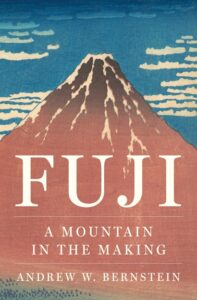If one ever forgets what poetry is for, this newly-released collection is a reminder of its ability to renew, sooth and provoke. Mirror is a translation of a lengthy posthumous selection of Chinese poet Zhang Zao’s lifelong opus.
Qing Yuan works in a morgue, cleaning bodies. He grew up in a cultured family before 1949, studying art and literature in university. Qing Yuan’s father owned a jewelry shop and got into trouble with the new government after he tried to hide a small amount of gold during the early days of nationalization. Qing Yuan was punished for his father’s capitalist ways and when Ruyan Meng’s novel opens in 1966, he’s been the morgue keeper of the title for sixteen years.
Ann YK Choi made a splash on the literary scene a decade ago with her debut novel, Kay’s Lucky Coin Variety, a coming of age story of a young Korean-Canadian who grew up in her family’s convenience store in 1980s Toronto. This book was a finalist for the Toronto Book Awards, among many accolades. With her new novel, All Things Under the Moon, Choi effortlessly switches genres from contemporary to historical fiction.
Between the First and Second World Wars, activists across the British Empire began to think about what their homes might look like as independent nations, rather than colonies subject to the control of London. Sometimes, these thinkers found refuge and common cause in others elsewhere in the Empire—such as between India and Egypt, as Erin O’Halloran explores in her book East of Empire: Egypt, India, and the World Between the Wars. India was the jewel in the British Empire’s crown; Egypt was the strategic artery that connected Britain’s eastern possessions with the metropole.
The term “Industrial Revolution” entered modern parlance in 1799, courtesy of the French diplomat Louis-Guillaume Otto. What began with incremental improvements in steam power and textiles would sweep the world, freeing societies from the Malthusian trap while upending the distribution of political power. But for all that epochal significance, scholars have never arrived at a consensus on why it began in Western Europe and not, say, East Asia. After reading Mehran Gul’s The New Geography of Innovation, one suspects that the present revolution in silicon and algorithms will also evade simple explanations.
Political memoirs or, worse, philosophical treatises by political leaders, are often books best avoided. Yet Anwar Ibrahim’s recent Rethinking Ourselves is nonetheless one the most erudite collection of essays out in this or any recent year.
There’s something about old Hong Kong and Shanghai that lend themselves to ghost stories and mysteries. They share a similar history during World War II as well as traditions like the Tomb Sweeping and Hungry Ghost Festivals that honour the dead. The two cities are also known for stately old colonial homes, many of which still remain today. After Kristen Loesch lived in Hong Kong 15-20 years ago, she learned of Dragon Lodge, an abandoned old home on the Peak rumored to be haunted, and formed the story that would become her new novel, The Hong Kong Widow, an engaging ghost story that alternates between wartime Shanghai, 1950s Hong Kong, and present-day US and Hong Kong. To add an extra touch to this chilling story, Hong Kong artist Jiksun Cheung’s illustrations are scattered throughout the story.
From a general historical perspective, the current confrontation between mainland China and Taiwan is not difficult to explain. By the end of the 19th century, Qing Dynasty was teetering on the brink of collapse. Territories were carved out and handed over to foreign colonizers after failed battles. Taiwan was ceded to the Empire of Japan in 1895.

Mount Fuji is everywhere recognized as a wonder of nature and enduring symbol of Japan. Yet behind the picture-postcard image is a history filled with conflict and upheaval. Violent eruptions across the centuries wrought havoc and instilled fear. Long an object of worship, Fuji has been inhabited by deities that changed radically over time. It has been both a totem of national unity and a flashpoint for economic and political disputes. And while its soaring majesty has inspired countless works of literature and art, the foot of the mountain is home to military training grounds and polluting industries. Tracing the history of Fuji from its geological origins in the remote past to its recent inscription as a World Heritage Site, Andrew Bernstein explores these and other contradictions in the story of the mountain, inviting us to reflect on the relationships we share with the nonhuman world and one another.
Through the meddling of her older sister, Janavi, a young woman from Varanasi, India, a city on the Ganges, stumbles into an arranged marriage with Sagar. Sagar is a hydraulic engineer about to emigrate to Custer County, Montana (the “Indian Country” of the title of Shobha Rao’s new novel); he has been hired to remove a dam on the Cotton River.

You must be logged in to post a comment.